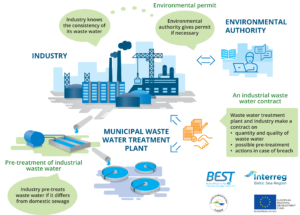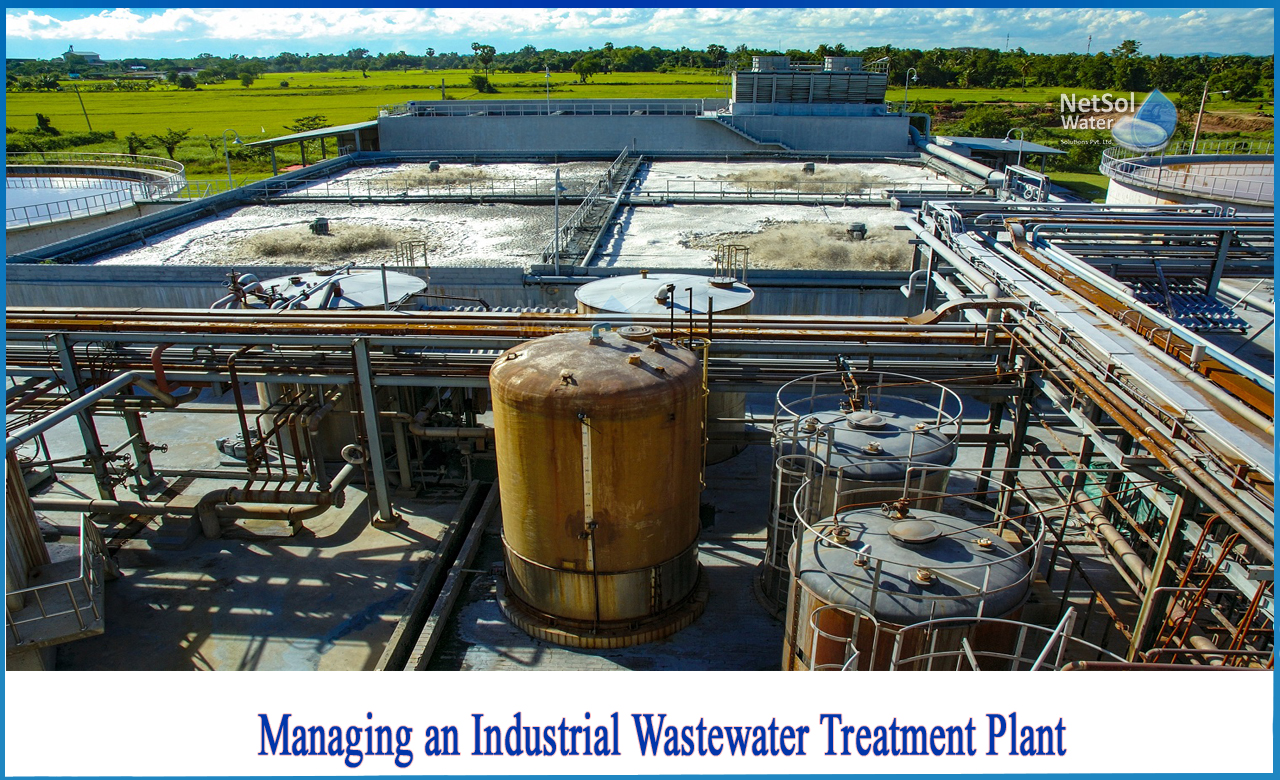Industrial Waste Water Treatment-- Improve Performance with Custom-made Water Treatment Systems
Industrial Waste Water Treatment-- Improve Performance with Custom-made Water Treatment Systems
Blog Article
Key Strategies in Hazardous Waste Water Therapy Processes
The therapy of industrial wastewater is a crucial element of environmental monitoring, including a series of methods developed to minimize the effect of impurities. From the essential physical methods that separate solids to the innovative chemical and biological processes that target specific toxins, each method plays an important duty in attaining water high quality requirements. Innovations in modern technologies such as membrane filtering and advanced oxidation processes offer ingenious options for enhancing therapy effectiveness. Recognizing how these techniques interconnect and their ramifications for sustainability raises crucial questions about the future of wastewater monitoring in industry.
Physical Therapy Methods
Exactly how efficiently can physical therapy methods attend to the complexities of industrial wastewater? Physical therapy techniques play an essential duty in the initial phases of wastewater management, focusing largely on the elimination of solids and big particulates. Techniques such as purification, flotation, and sedimentation are crucial for minimizing the concentration of suspended solids, consequently boosting the efficiency of subsequent therapy procedures.
Sedimentation entails the gravitational settling of solids, permitting for the separation of heavier materials from the wastewater. This technique is specifically effective in making clear water prior to organic or chemical treatments.
Furthermore, flotation techniques, which utilize air bubbles to lift put on hold solids to the surface area for removal, work in dealing with wastewater with high concentrations of fats, oils, and greases. Overall, physical therapy methods function as a critical initial action in the comprehensive monitoring of commercial wastewater, guaranteeing that the tons on subsequent treatment phases is reduced and boosting overall therapy efficiency.
Chemical Treatment Techniques
While physical therapy methods prepared for effective wastewater administration, chemical therapy strategies are important for resolving the a lot more complex contaminants commonly found in commercial effluents. These techniques utilize numerous chemical representatives to speed up, reduce the effects of, or oxidize unsafe materials, making sure a much more extensive elimination of toxins.
One usual method is coagulation and flocculation, where chemical coagulants such as light weight aluminum sulfate or ferric chloride are added to promote the gathering of suspended bits. This procedure enhances solid-liquid splitting up, decreasing turbidity and boosting water quality. Furthermore, neutralization procedures are used to adjust the pH of wastewater, using acids or bases to reduce the effects of acidic or alkaline streams, specifically.
Oxidation-reduction reactions play a vital function in degrading organic contaminants and microorganisms. Chemical oxidants like hydrogen, ozone, or chlorine peroxide are used to break down complex natural compounds, making them much less harmful or extra eco-friendly. Advanced oxidation processes (AOPs) integrate numerous oxidation techniques to improve pollutant removal efficiency.
Biological Treatment Procedures
The performance of wastewater treatment is considerably improved by biological therapy processes, which harness the all-natural metabolic tasks of bacteria to decay organic issue and get rid of toxins. Industrial Waste Water Treatment. These processes mainly entail anaerobic and cardio digestion, each customized for specific sorts of wastewater
Cardio treatment procedures use oxygen to sustain microbial development, advertising the breakdown of natural toxins into co2 and water. Usual Homepage methods include turned on sludge systems, where oygenation storage tanks help with the mixing of wastewater with microbes, and dripping filters, which encourage biofilm growth on media surface areas.
On the other hand, anaerobic treatment procedures take place in the lack of oxygen, utilizing anaerobic microorganisms to disintegrate organic issue, leading to biogas production, an eco-friendly energy resource. Anaerobic digesters are commonly employed in commercial settings for this objective, efficiently reducing the quantity of sludge while generating useful biogas.
The selection of an organic therapy technique relies on wastewater attributes, therapy goals, and governing standards. The assimilation of biological processes in wastewater therapy not only improves toxin removal efficiency but additionally promotes sustainability by lessening chemical use and supporting source recuperation.
Advanced Oxidation Processes

Typical AOP methods consist of Fenton's photocatalysis, reagent, and ozonation. Fenton's reagent, a combination of hydrogen peroxide and ferrous iron, catalyzes the development of hydroxyl radicals, making it reliable for dealing with wastewater containing phenolic compounds and various other stubborn materials.
AOPs offer several advantages, consisting of lowered sludge production and the ability to treat wastewater with high concentrations of natural contaminants. The execution of AOPs calls for careful consideration of operational parameters her latest blog and cost-effectiveness, guaranteeing that these sophisticated methods are properly integrated into existing wastewater treatment systems.
Membrane Filtration Technologies

Microfiltration works for removing suspended microorganisms and solids, while ultrafiltration targets smaller organic molecules and viruses. Nanofiltration connects the space in between ultrafiltration and turn around osmosis, properly getting rid of divalent ions and organic compounds. Reverse osmosis offers the greatest degree of filtration, made use of largely for desalination and removing mono-valent ions.
Membrane technologies offer countless advantages, including low power intake contrasted to traditional treatment methods, modular layout for scalability, and the possibility for water recuperation and reuse. Difficulties such as membrane layer fouling and the requirement for routine maintenance must be addressed to ensure system efficiency. On the whole, membrane layer filtering technologies represent an essential part of contemporary industrial wastewater therapy approaches, advertising sustainability and resource conservation in water monitoring.
Verdict
To conclude, industrial wastewater treatment uses a varied variety of methods, including physical, chemical, biological, and progressed approaches. Each strategy plays a crucial duty in properly resolving numerous pollutants, improving water quality, and promoting source sustainability. The combination of these techniques cultivates a thorough treatment approach, making sure that industrial effluents fulfill regulatory criteria while reducing environmental impact. Proceeded developments in these techniques will better enhance the performance and efficiency of wastewater treatment processes in commercial settings.
The treatment of commercial wastewater is an important element of environmental management, entailing a variety of techniques developed to alleviate the effect of impurities.How efficiently can physical therapy approaches address the complexities of industrial wastewater?Advanced oxidation processes (AOPs) represent a sophisticated strategy in industrial wastewater treatment, designed to efficiently break down natural toxins that are usually immune to conventional treatment methods (Industrial Waste Water Treatment).In conclusion, industrial wastewater treatment employs a diverse array of techniques, including physical, chemical, biological, and advanced approaches. Proceeded innovations in these methodologies will certainly further boost the performance and performance of wastewater therapy procedures in commercial settings
Report this page